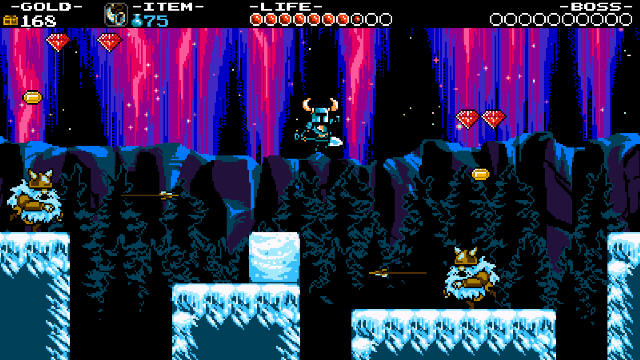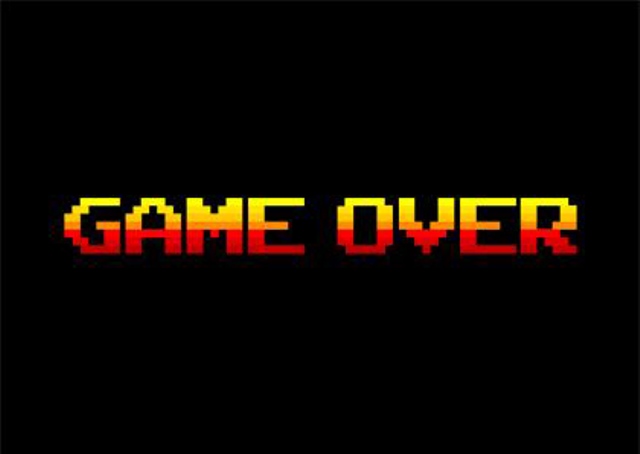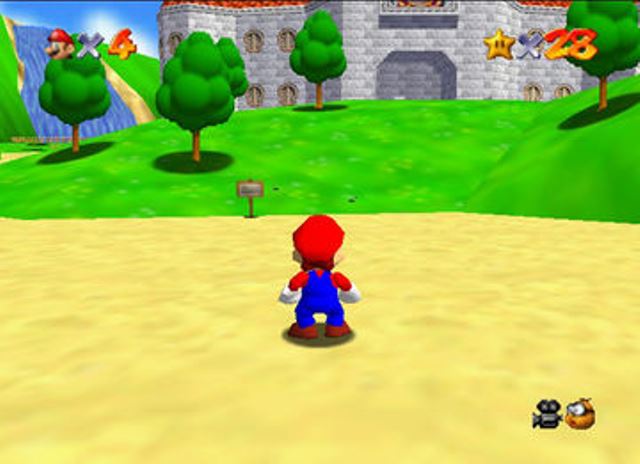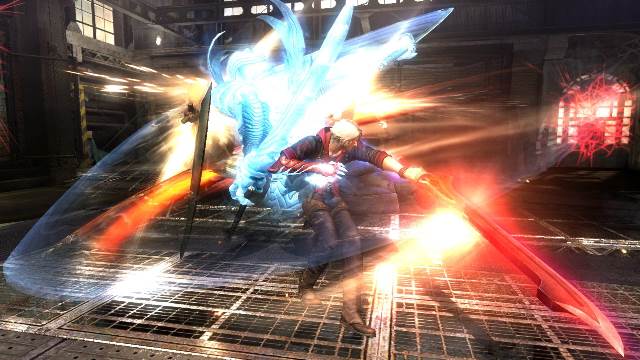Opinion: Every hard game should have an easier mode
There was once a time we now call the “Good Old Days.” In those days, instant classics spewed forth from every developer’s spicket at such a torrid pace that there was nary an excuse to ever emerge from your parents’ basement and absorb so much as a single UV ray.
Ah yes, they were glorious, those days, weren’t they? Every game was a masterpiece of innovation and craftsmanship, and there wasn’t a single rushed sequel or licensed shovelware release in sight. Replay values were always near infinite, color palettes were consistently varied and vibrant and every single game featured stellar multiplayer and single-player modes.
There’s just one problem with the Good Old Days – they weren’t really that perfect. Certainly it was exciting to grow up during the days of gaming’s so-called Golden Age – sometime between the late ‘70s and mid ‘90s, depending on whom you ask. Everything was new and exciting back then, but not everything was necessarily better. There were good games and bad, just like today. One thing that was almost universally true, though, is that every game was much harder than modern games are. But that doesn’t mean today’s developers should rush to emulate that difficulty – at least not without providing some conceits.
Way back when
I wasn’t born until 1983, so I can’t speak to how playing games was prior to the middle of the 1980s. But from that point until sometime around when Mario took his first steps onto the 3D lawn out front of Peach’s Castle, and when Crash Bandicoot first showed up to prove how much cooler he was than Mario, gaming was demanding.
Before then, lives and continues meant something in every game. You usually had a finite amount of them, forcing you to play strategically and to obsessively accumulate whatever collectibles granted you more of them. And when you ran out, you were unlikely to be going back to a midway point of the level you were on or even to the beginning of that level – you were going all the way back to the beginning of the game. That was just the reality of gaming back then, and you accepted it because you didn’t know of any other way things could be.
As a result, games felt longer. Though there were certainly 8-bit games that had scores upon scores of screens for players to grind through, many of the classics were as short or shorter than today’s big releases; they just seemed longer because you were constantly dying and starting them over. Sonic the Hedgehog felt like it was so long that beating it was an impossibility for all but the most disturbingly dedicated gamers, but much of that was due to the fact that you were constantly seeing the game over screen and having a one-way ticket back to Green Hills Zone punched for you.
What’s more, gaming was mostly something children did back in those days. In 2014 the Electronic Software Association found that the average age of a gamer was 31. During the Golden Age, though, gamers were more likely than not to be teenagers. How is that relevant to a discussion about the difficulty of games? It’s all about the ratio of free time versus disposable income.
Rare is the child who can fund his own gaming habit. Most children rely on parents, aunts, uncles, etc. to purchase them a few games a year as gifts. Though the amount of games every child is gifted each year obviously varies depending on factors like economic standing, the point is that the supply is limited. This was especially true in those fabled Good Old Days when being a gamer carried with it much more of a stigma than it does today. Outside of the insular gamer population, games were viewed by many to be anything from a complete waste of time to being the latest thing that was supposedly poisoning the minds of youths and ruining society. That meant it was difficult to acquire and play a substantial number of games in a year without being viewed as some sort of social deviant.
Right now
Games may have been more difficult to master two or more decades ago, but if you’re the “average” 31-year-old gamer of today then you likely had much more time to devote to individual games in the ‘80s and ‘90s than you do now. That meant that if you had a game you enjoyed you were willing to suffer through just about any hellish challenge over and over and over again until you had overcome it. If you’re unlikely to get another game for months or longer, then your only options are to do grin and bear the most onerous difficulties or not play games at all.
Today, you probably have the money to avoid that problem. At 31 it’s reasonable to assume you can (probably) afford to play whatever games you want to play. This is especially true when you factor in the reality of cheap and free-to-play console, PC, mobile and browser games and the explosion in the sheer volume of commercially released video games. In 2015, there is never “nothing to play.”
Instead, the average gamer finds that the money versus time ratio has flipped. Between having a job, a family and other pesky adult responsibilities it becomes increasingly difficult to find as much time to game as we did in our childhoods. That trend will continue for most of us until retirement, when we force our fingers, aching from arthritis, to tackle the mother of all backlogs we’ve spent a lifetime accumulating thanks to all that disposable income.
Despite these realities, there has been a chorus of complaints over the last decade that today’s games are too easy. Parts of the industry, particularly independent developers, have responded by releasing brutally challenging games like Guacamelee, Shovel Knight and Super Meat Boy. Each of these games is one of the finest 2D action-platformers of our time. They’re also each one of the most frustrating, anger-inducing games out there.
Recently, I watched XBLA Fans’ Jill Randolph suffer through Shovel Knight for review. It’s unpleasant to have to call it “suffering,” because developer Yacht Club created a fantastically polished game in Shovel Knight, but holy hell is it hard. Jill died 543 times while playing, which I would say was an impossibly high number for a 16-hour playthrough of a game. I would say that, that is, if I had not witnessed her playing through the majority of those deaths.
I’m not sure what’s more miraculous: that she made it through to the end of that game, or that her Xbox controller did.
Many gamers enjoy that kind of controller-throwing, pillow-punching, obscenity-shouting gaming experience. I’m not one of them, and I don’t understand those who are, but I know there are many of them out there. They should, therefore, be able to get that experience, and they certainly can.
Options
But what about the rest of us? In addition to not wanting to lose my temper over a game’s challenge, I also don’t want to worry about losing my progress. It might have seemed fair to have to abandon all advances and start a level or a game completely over again in the Good Old Days, but that just seems annoying in 2015. And with the plethora of other games available for me to play, it’s more likely to inspire me to permanently put a game aside than it is to make me want to rush back in and try it all again the next time I get a chance to play a game.
Should that preclude me from enjoying great games like Shovel Knight? I don’t think so, and satisfying both gamers like me and gamers who go looking for intense difficulties is surprisingly simple. All developers have to do is put an easier mode into their games.
In the Good Old Days I of course would have laughed at the n00bs – if the term “n00bs” had existed back then, that is – who needed to tune the challenge down a bit to get by. Those days are long since over, though. Today I just want to enjoy games, and I don’t care if doing so means selecting Easy or Casual in a menu. Astoundingly, Shovel Knight features a way to make the experience even more difficult (smash the checkpoints to remove them in exchange for some money) but no option for making the proceedings easier.
And that’s all I’m asking for – an option. Devil May Cry 4 is coming to Xbox One as a special digital edition next month, and it’s a game that has such an option. It has 10 difficulty levels, actually. The DMC series can be absurdly difficult at times, but it at least respects the fact that there are players out there who want the fun without the frustration, and it gives them options.
Now, it would be unfair and frankly unrealistic to expect an indie like Yacht Club to release a game as feature-rich as Capcom can; however, I’m not asking for every game to have 10 different challenge levels. But is it too much to ask for a single easier mode in games that are as challenging as they are fun on their default setting? I don’t think so, and I don’t think I’m the only average gamer who feels that way.
Update: After this editorial was published, Yacht Club contacted XBLA Fans to point out that there are over 300 cheat codes for Shovel Knight. While not all of those codes make the game easier, and some actually increase the difficulty, many of the codes are designed to help the player. XBLA Fans apologies for this oversight, but it does not change the editor’s argument that all hard games (not just Shovel Knight) should have an easier mode.
Image Sources: Gaming Wikia, Lost Media Wikia





